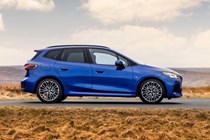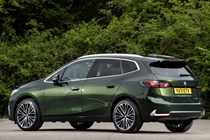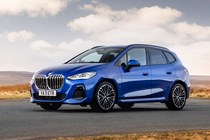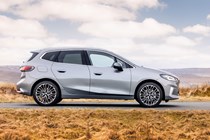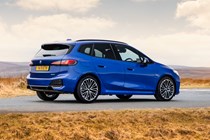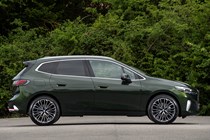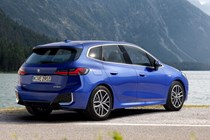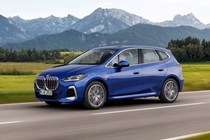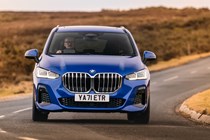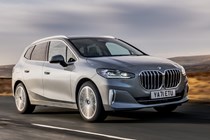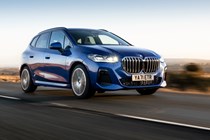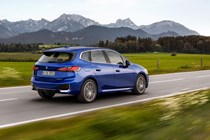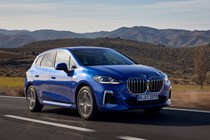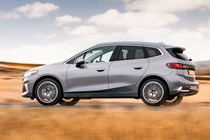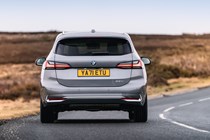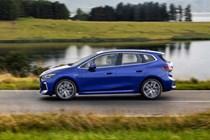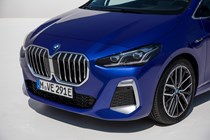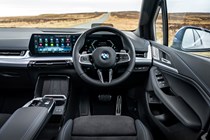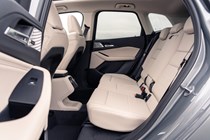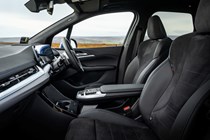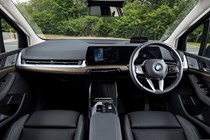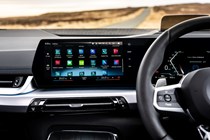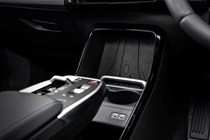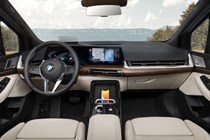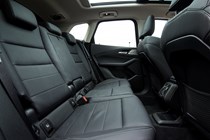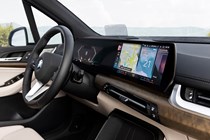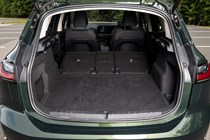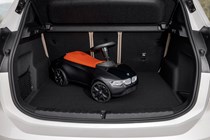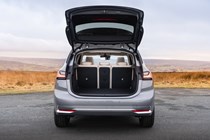
BMW 2-Series Active Tourer long-term test
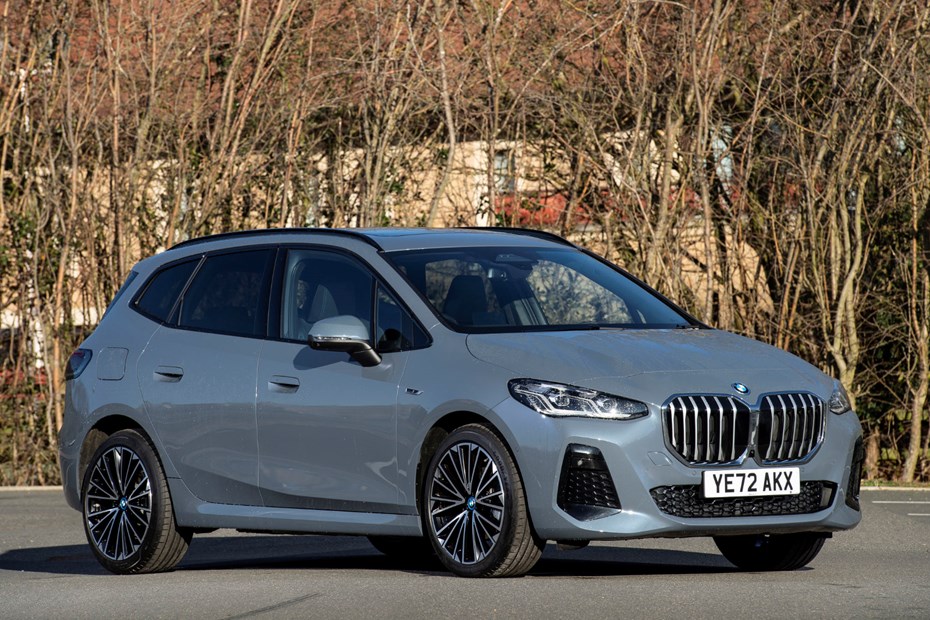
New cars editor Alan Taylor-Jones is finding out whether a BMW 2 Series Active Tourer will suit his growing family over the next four months.
Keep scrolling for all the updates in order, or click on the below links to jump straight to the section you want.
Report 4: 223 or not 223, that is the question
Report 1: Going green
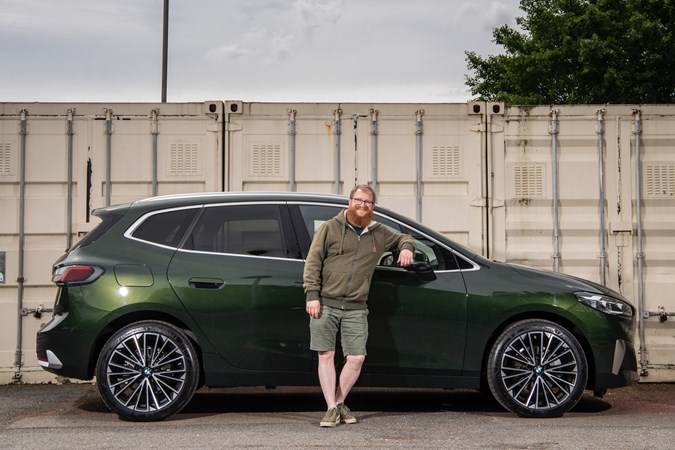
Although I’m normally more than happy poring over brochures, price lists and configurators to pick the spec of my long termer, the decision-making process was a lot simpler this time. After the lovely folk at BMW offered a 2 Series Active Tourer for a four-month loan, my main request was that it was painted in this fabulous shade of Sanremo green.
More practically, I decided that the full leather seats that come standard with Luxury trim would be much easier to clean than the faux suede that M Sport models come with. With our nine-month-old son Rupert to consider, I’ve quickly found that wipe-clean surfaces aren’t just handy, they’re a necessity. Besides, Luxury means wood trim inside, another big tick in my book
Any additional toys?
A quick look at the options list soon revealed a few items that are by no means vital, but certainly make life noticeably easier. Keyless entry with a gesture-controlled tailgate makes loading up easier when you’ve got your hands full with baby and the mountains of kit required to support him, while electric memory seats are a real boon when switching drivers.
Tinted windows should help keep Rupert cool while a panoramic roof lets him birdwatch, something I also appreciate when I’m sat in the back. As for the 19in wheels, well, they’re more for me than anyone else.
What engine?
With diesel prices skyrocketing and no plug-in hybrid available at the time, it was down to a choice of two petrol engines. As tempting as the 2.0-litre 223i was, I was sensible and selected the entry-level 1.5-litre 220i. Like the larger petrol, it has mild hybrid assistance to help boost power and improve efficiency.
With 170hp and a claimed 0-62mph time of just over 8.0sec it’s by no means slow, although there are times I’d rather have a manual gearbox than the standard automatic. So far the average real-world economy is a smidge over 40mpg, slightly better than the smaller, slower Q2 that was my previous long termer.
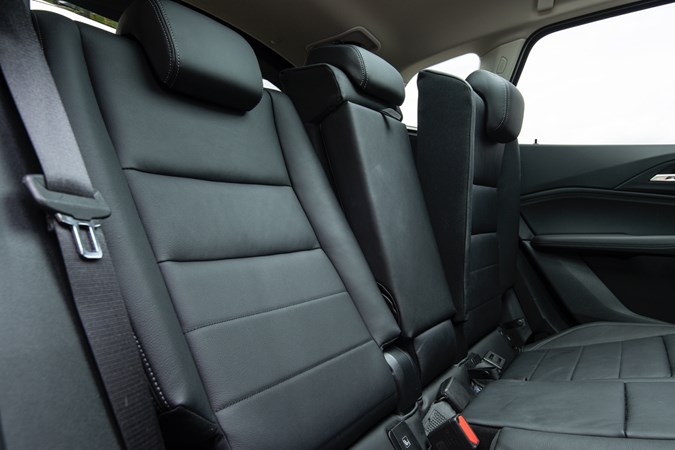
But why an MPV?
They might not be the most fashionable car out there, but there’s no doubting just how useful they are. Despite being barely any longer than the Q2 it replaces, there’s more space for passengers, a bigger boot and more flexible rear seating. Not only do they fold in a useful 40/20/40 split, they also slide fore and aft so you can increase the size of the boot or maximise rear legroom.
For those that appreciate a high driving position, it’s also worth pointing out the 2 Series perches you higher than many so called SUVs. As an added bonus, that makes it even easier to slot Rupert into and out of his child seat. In other words, it’s a more sensible option than many similarly sized SUVs.
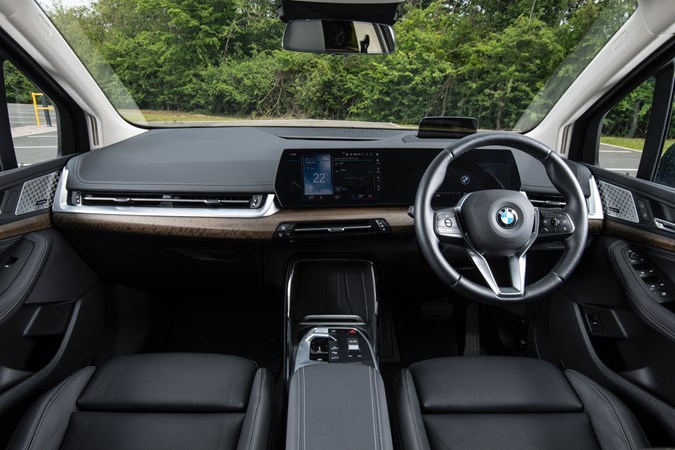
Thoughts so far
Initial impressions are rather favourable. The engine is smooth for a three-cylinder, very rarely do I want for more power and it’s hushed at a cruise. It’s also one of the more enjoyable MPVs to hustle along a B road should I find myself with an empty car.
Crucially, Rupert’s pram fits into the boot with more space to spare and there are loads of handy cubbies for toys, bottles and the mountain of wet wipes we’re currently getting through. As we’re keeping him up front for the moment, the standard front Isofix is most welcome and I have a lot more space to stretch out in the back, regardless of who I sit behind.
Any issues?
Actually, yes. My Active Tourer has wireless Android Auto and Apple CarPlay which is great, when it works. After a few weeks without issue, the car wouldn’t connect to my Android phone. Even worse, it kept on trying even if I was nowhere to be seen rather than connect to my wife’s iPhone.
I tried cancelling the connection, something the car decided it didn’t want to do. I was running out of ideas until I spotted a notification on my phone asking to connect to the BMW app I had downloaded. Once I’d accepted the connection, things went back to normal.
I had wondered if this was the issue all along until I remembered that my phone had been connecting without issue up until that point, even with the app installed and not fully linked to the car. It’s something I’ll keep an eye on as the smartphone connection is vital for hands-free calls and besides, both my wife and I are big fans of Waze.
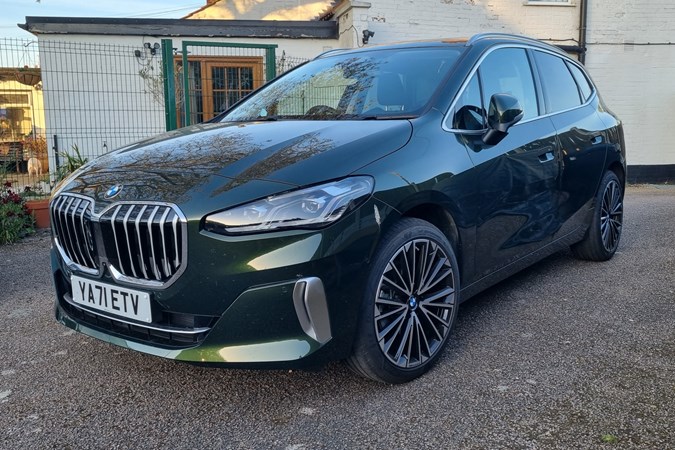
Report 2: Too much tech?
Like all new cars these days, the 2 Series Active Tourer is stuffed full of technology designed to make your life easier, safer and cleaner. For the most part it works well, although there have been a number of frustrations that make us pine for simpler times.
After all, pretty much everything you do has to be processed by an electronic device before anything actually happens. Want to amend the temperature? You’ll need to go into the central touchscreen. Stereo? You do have some physical buttons and dials on the steering wheel that look cheap but work well enough, but most functionality is accessed via that screen.
You’ll also need to go there to turn off the lane keep assist that’s a bit overactive, while even the engine has plenty to think about. That’s because there’s an electric motor fed by a small battery pack that increases power and improves efficiency. It’s blended in smoothly, although there is a noticeable hesitation at times which makes entering a busy roundabout more fraught that it ought to be.
Manoeuvring maladies
It affects manoeuvring, too. Even with the overly keen auto handbrake off, it’ll sometimes feel like it doesn’t want to move with a light throttle opening, causing you to squeeze the right pedal harder at which point the 2 Series shoots backwards. You learn to anticipate it, yet I’d rather not drive around a problem that other mild hybrids don’t seem to have.
However, on the move we’ve little to complain about in terms of the engine. It settles into the background at a cruise, a task made easier by the road roar on coarse surfaces that’ll have you cranking the stereo up. Performance is certainly better than you’d expect from a 1.5-litre petrol and there is a Sport mode that wakes the gearbox up a bit. There’s no manual override for the gears unlike M Sport models, though.
My biggest bugbear so far has been another bout of smartphone connectivity issues, with the exact same problem as highlighted in the first update. No amount of fiddling would solve the issue, until one day it just started working again. Since then I’ve updated my car’s software using the rather handy My BMW smartphone app which will hopefully solve the issue for good.
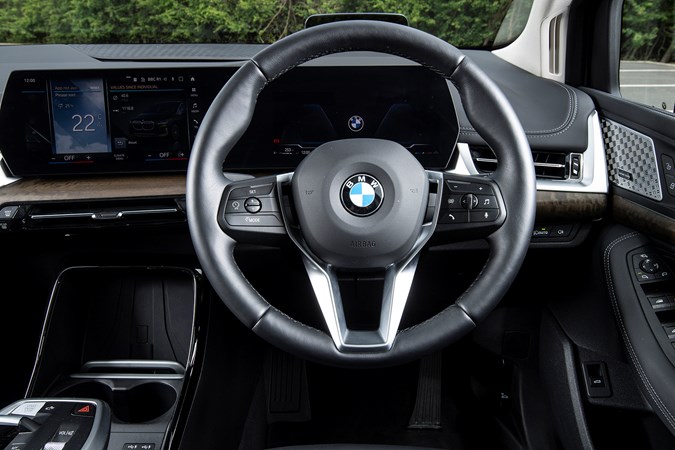
Download and go
The prompt flashed up when I was at home allowing me to download the update to my smartphone. This was transferred to the car when I next connected my phone wirelessly, with clear instructions on what to do when I parked up. The car was effectively out of action for 20 minutes so it’s not something you want to do grabbing milk from the corner shop, though.
The app has plenty of other handy features, too. I can see my car’s range and location, turn on the ventilation system, lock and unlock it, flash the lights and sound the horn to find it in a carpark, and you can even set your phone up as a key for starting it. You can even access the car’s exterior and interior cameras to check up on things, while it’ll alert you if the alarm goes off. Clever stuff.
While my wife and I can agree with each other on most areas of annoyance, we do have differing opinions on the built in sat nav. Whilst I quite like the video feed from the nose of the car overlayed with direction arrows, she’d much rather have a simple map on screen as she finds it far less distracting.
For all my grumbling, the 2 Series is doing a decent job of family transport. Economy is palatable and there are few occasions we want for more space. More on that in my next report.
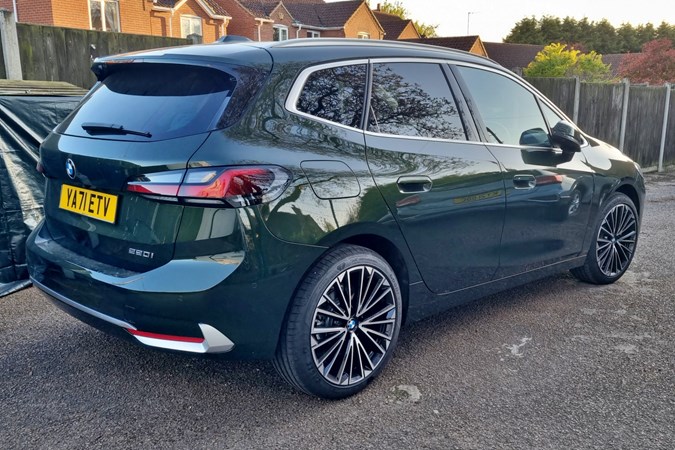
Report 3: Family life
You might think I’ve not been getting on with my Active Tourer if you’ve just read the last couple of reports, but that couldn’t be further from the truth. Last month’s software update seems to have solved all of our connectivity woes without having to bother our local BMW dealer, while we’ve learned to deal with the car’s inconsistent throttle response when manoeuvring.
That has brought back into focus all the reasons why the 2 Series is far better suited to family life than our previous long termer, an Audi Q2. Because it’s a little bigger despite costing a broadly similar amount (given similar trims and engines), the Active Tourer swallows our infant son’s pushchair far more comfortably even with the sliding rear bench all the way back.
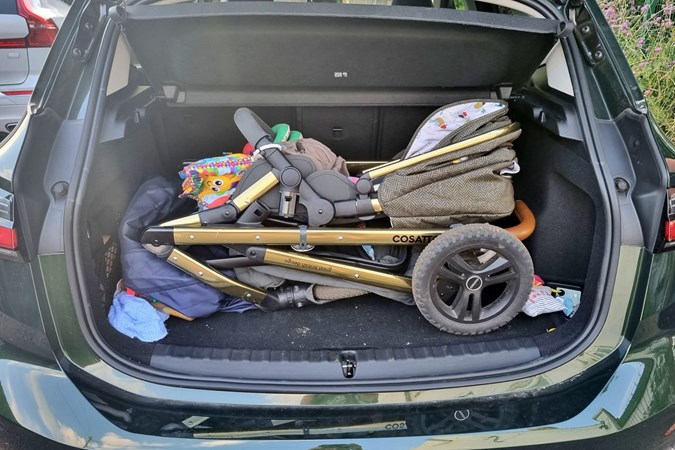
Not only is there more space for other items such as shopping and a giant changing bag, we’re also able to keep the parcel shelf where it should be rather than in our spare room. It’s a shame BMW doesn’t use a slightly stronger glue, though. One of the strings that attaches to the tailgate broke within a week of us getting the car.
There’s also more rear seat space than in the Q2 with both head and legroom in greater supply. This combined with the panoramic roof of our long termer, makes long journeys far more pleasant. Not only is there physically more room to stretch out, but it feels far less claustrophobic despite the predominantly black interior.

Although four adults can fit comfortably, add another grown-up or a child seat into the mix and the rear bench is something of a squeeze. Still, the Active Tourer is based on the 1 Series family hatchback, so this shouldn’t prove too much of a surprise. In fact, its compact size has proved a real boon when exiting a carpark with a particularly tight exit we use regularly.
It’s also just really well thought out inside. The door pockets are generously proportioned and the shelf under the front armrest can take all manner of toys, bottles and anything else a baby requires. The armrest also has a cubby inside, although this has proved too shallow to be of much use.
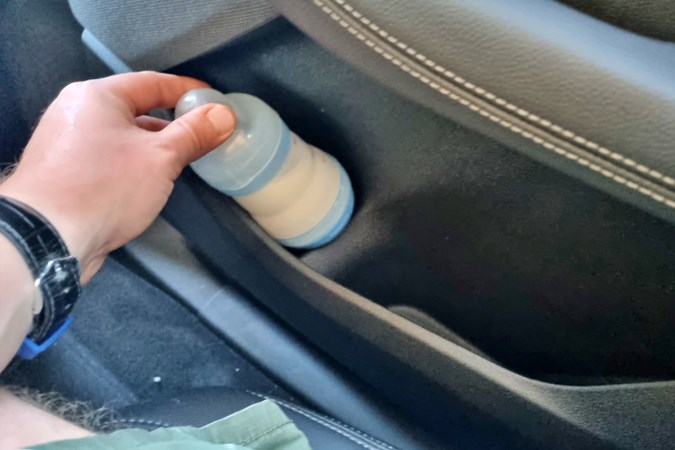
It’s not like you’re going to put your smartphone in there, either. There are a couple of USB-C ports near the front cupholders and also a wireless phone charger, something that should tie in nicely with the wireless Android Auto and Apple CarPlay. Unfortunately the charger can never supply my phone with quite enough volts, leaving me with a phone that’s no flatter than when I started but certainly not topped up. My thick phone case won’t be helping matters, though.
Sadly the Active Tourer and I will be parting company shortly, although not before I’ve spent some time in the range-topping 223i M Sport. Keep an eye out for my final report where I’ll cover the driving experience, whether I picked the right version and my overall verdict.
Report 4: 223 or not 223, that is the question
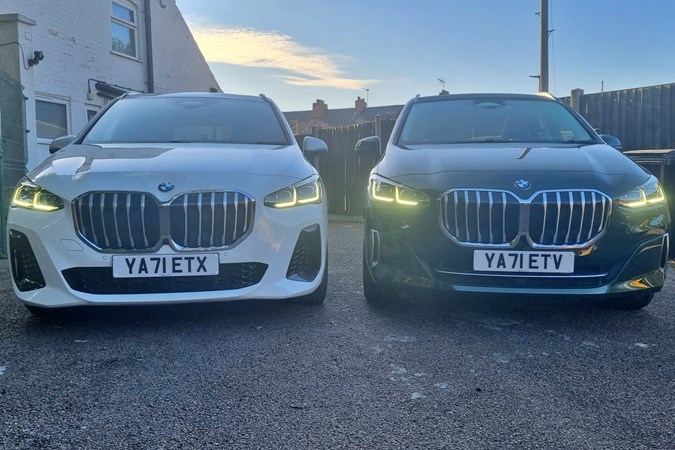
After four short months ‘my’ BMW 220i Active Tourer has left our driveway for the last time, although not before I’d set up a little comparison test. As promised in my last report, I’d booked a 223i in racy M Sport spec to see if my lackadaisical approach to speccing my 2 Series (‘just give me the green one, please’) had backfired.
Sitting next to each other, the white M Sport car certainly had greater presence on account of its more aggressively styled front and rear bumpers along with lower hanging side skirts. A keen eye will also notice the slight drop in ride height from lower, stiffer suspension, helping build on the M Sport’s athletic stance. Well, as athletic as an MPV can be.
That sporty feel is continued inside with grippy suede-like seat centres, metal pedals, metal trim in place of wood and an M Sport steering wheel with shift paddles, something annoyingly absent from my Luxury-spec long-termer. Thankfully the opportunity to compare both seats resistance to vomit didn’t arise, although my decision to go for leather seats on my car has proven wise on several occasions.
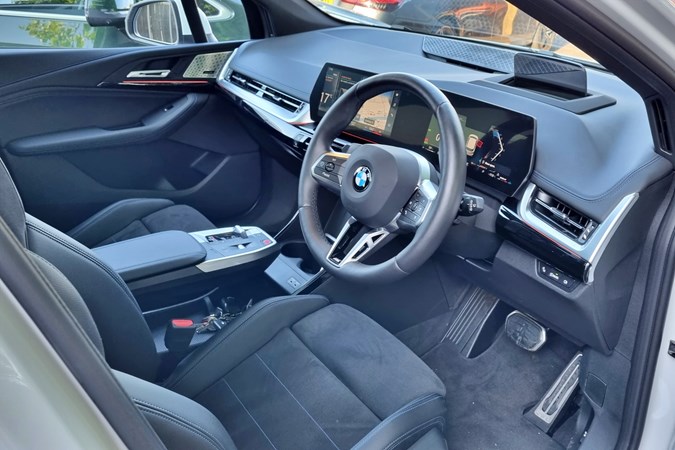
But the big difference is to be found under the bonnet. While my 220i has a 1.5-litre three-cylinder petrol engine with a turbo and mild hybrid assistance to boost it to 170hp, the 223i gets a bigger 2.0-litre four-cylinder. With the turbo and hybrid systems chipping in it develops 218hp, enough to knock around a second off the 0-62mph time, dropping it to just 7.0 seconds.
On the road the 223i undoubtedly has the better engine, proving smoother and quieter partially because you just don’t have to work it as hard, although the extra cylinder certainly helps. If you do decide to keep your foot down it’s also appreciably faster, something that will appeal to the inner girl or boy racer stuck in any mum or dad.
It’s not a walkover win for the 223i, though. For a start there’s still some of the low-speed hesitation that blighted our 220i, especially when reversing. For seconds I’m not blown away by the adaptive damping system that’s standard on M Sport. The idea is sound, letting you soften the suspension for normal driving and stiffen it when you’ve got an empty car and want to make progress.

It doesn’t feel as settled as the standard car in Comfort mode, where it’ll probably live 99% of the time, and it’s unlikely most drivers will appreciate the modest agility boost if you do venture into Sport mode. My recommendation? Get a 223i in Luxury trim and avoid the optional 19-inch wheels which certainly won’t be doing the firm ride on both cars any favours. Not only will the 223i give a useful refinement and performance boost, but there was also a minimal erosion to the economy.
But should you even look at a 2 Series Active Tourer in the first place? Well, if you can get past it not being an SUV you really should. For a start it’s proved to be surprisingly good at accommodating a baby seat up front whilst still providing those in the back with reasonable legroom. Space has something to do with it, but it’s actually the shape of the dashboard that helps here, allowing the passenger seat to go much farther forwards than in other cars, the Volvo V90 that has replaced it being a case in point.
The boot has proved big enough for a chunky stroller even without sliding the rear bench forwards which has again helped rear legroom. In fact, the only rear space gripe has been regarding the car’s width when squeezing three in the back, although we can blame its compact exterior dimensions for that.
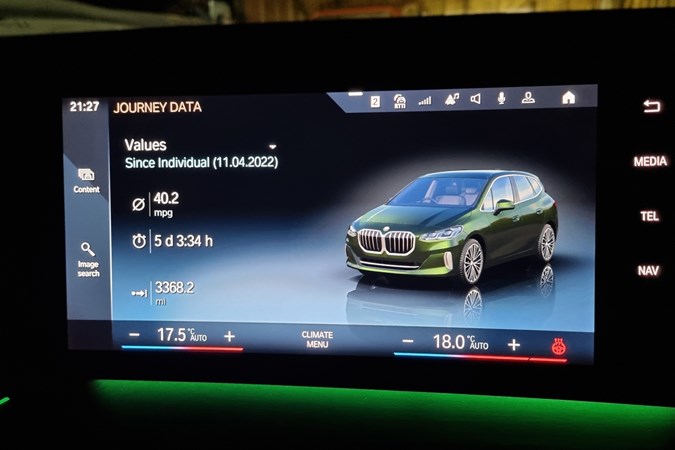
And our tech grumbles? The over-the-air update has certainly cured any connectivity issues we had, although we’d still like a few old-fashioned knobs and switches for crucial controls. As for the hybrid system, its hesitancy still annoys while average fuel consumption of 40.2mpg over nearly 3400 miles isn’t particularly impressive, if still better than the less powerful and smaller Q2 the 220i replaced.
Then there’s the small matter of badge. Yes, we appreciated the high-quality interior and relatively dynamic drive the blue and white roundel brings, but you’re undoubtedly paying that bit more for a premium name. So, with that in mind, while we can happily recommend the 2 Series Active Tourer over similarly priced premium-badged SUVs, those after maximum practicality should strongly consider a seven-seat Volkswagen Touran or Caddy instead.



